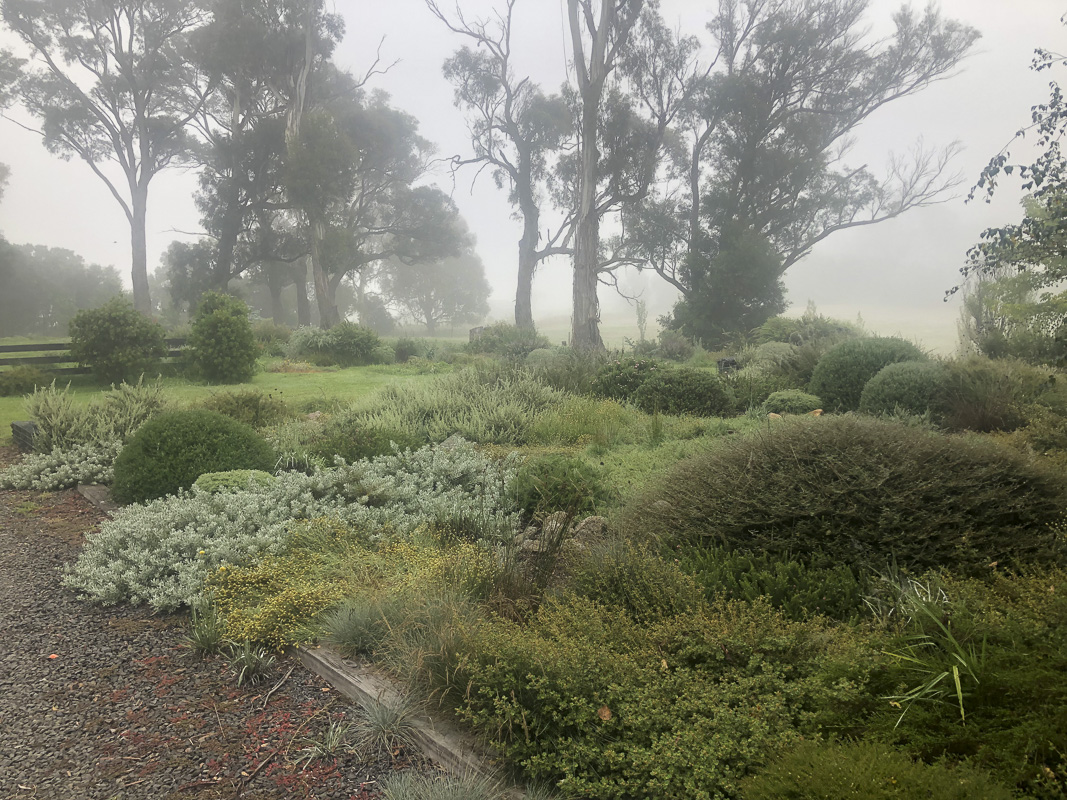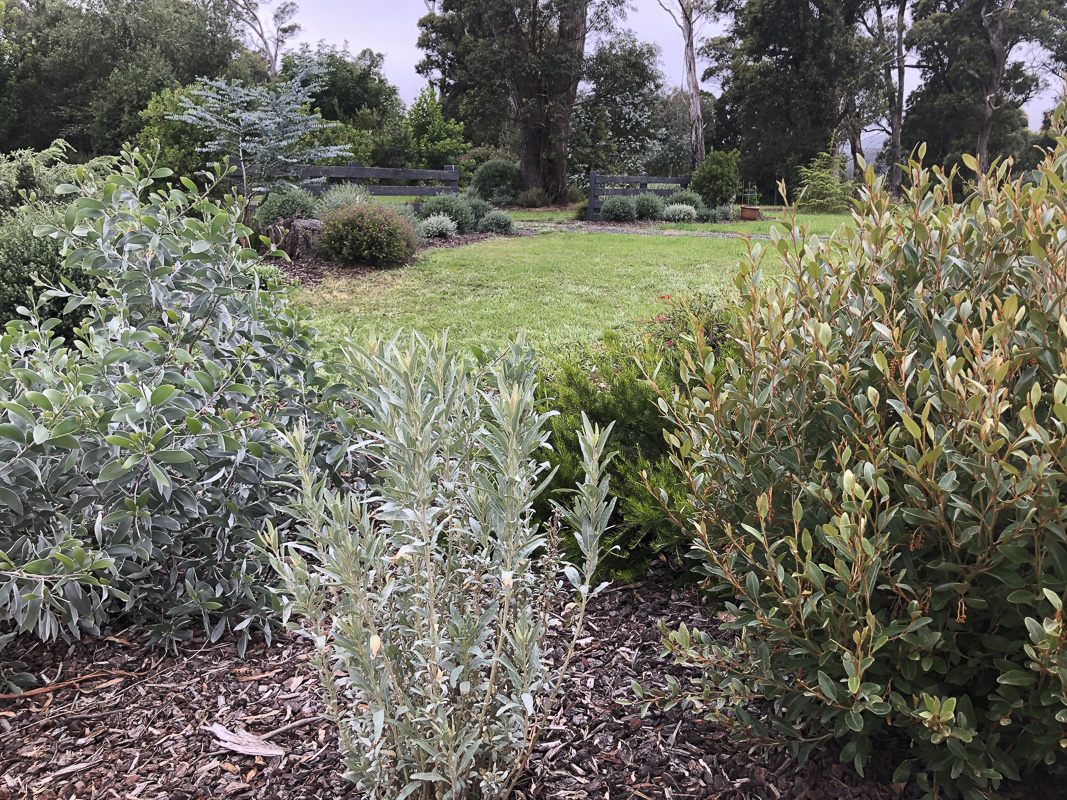My Southern Tablelands garden follows the style of many country gardens. It has formal garden beds and lawns rather than bush plantings and winding paths. Here is my design philosophy and how it is evolving.
Location and site conditions
My rural property in Reidsdale south of Braidwood NSW sits in open farmland between several large sheep and cattle properties. Approximately 1.2 hectare (3 acres) have been set aside for the garden. The soil is variable with some parts enjoying a rich friable chocolate loam. But most areas show the effects of overgrazing with only the clay subsoil remaining. Drainage is insufficient for many Australian natives.
This part of the Southern Tablelands experiences dry windy cold winters with frequent frosts which can be severe. The summers are mild and wetter but overall rainfall is erratic.

Garden design in my Southern Tablelands garden
As the garden is not in a bush setting, it mostly follows the style of many country gardens. It has formal garden beds and lawns rather than bush plantings and winding paths. There are a number of large mature Eucalyptus viminalis throughout the garden.
My six years of gardening here has involved a steep learning curve on plant selection. Given the scale of the garden it is only practical in terms of cost and time to plant those plants that allow for the conditions. In particular, little is done to improve drainage, provide frost or wind protection or supplementary watering. The garden has many cultivars but no grafted plants.

Plants and planting
The garden does not feature plants that are individually beautiful. Instead it relies on plants that look healthy and fit the overall garden design. The result is that I am increasingly drawing from a fairly small palate of plants. I am constantly searching for handsome hardy plants of local provenance, although these are often hard to source.

Daviesia mimosoides and Olearia erubescens are two that grow naturally on the property and do very well in the garden. Keeping with this theme the waratah garden contains a number of Telopea mongaensis (the property on is on Monga Lane) and otherwise mainly contains the well-known cultivar Braidwood Brilliant, named after our local town.
To give the garden continuity, Westringia sp tightly pruned as well as Rhagodia spinescens have been repeat planted. Unfortunately, both of these appear to hate cold wet feet and have been badly damaged across the garden during the wet 2022 winter. Many other plants however, such as Veronica perfoliata and certain Correa sp have proved extremely reliable and so it just comes back to best plant selection.

Looking forward
My thinking about my Southern Tablelands garden is constantly evolving so that the actual garden is always two or three steps behind where I want it to be. Plans for this summer include planting out a very large area with ornamental grasses with Eucalyptus lacrimans, a small spindly eucalypt, dotted throughout. These eucalypts come from around Adaminaby where they grow on flat poorly drained ground and experience frost, snow, frozen ground and heavy mist.
In another area I have decided to stop cutting back the Acacia melanoxylon that sprout abundantly and grow vigorously across the property but allow them to grow naturally and underplant with species of Lomatia, Phebalium and Philotheca.
Last summer the lawns outside the front gates were replaced with a simple mass planting of Rhagodia spinescens, Correa glabra and Westringia glabra deep purple. So far so good despite the wet winter.
I am hoping these will all thrive and my farmer neighbours much attached to their iceberg roses, birch trees and Agapanthas will be wowed and amazed by how beautiful an Australian native garden can be.
To view a similar garden in the Central Tablelands, see Fiona Johnson’s garden at Cloudy Hill.
 Australian Native Plants Society (Australia)
Australian Native Plants Society (Australia)